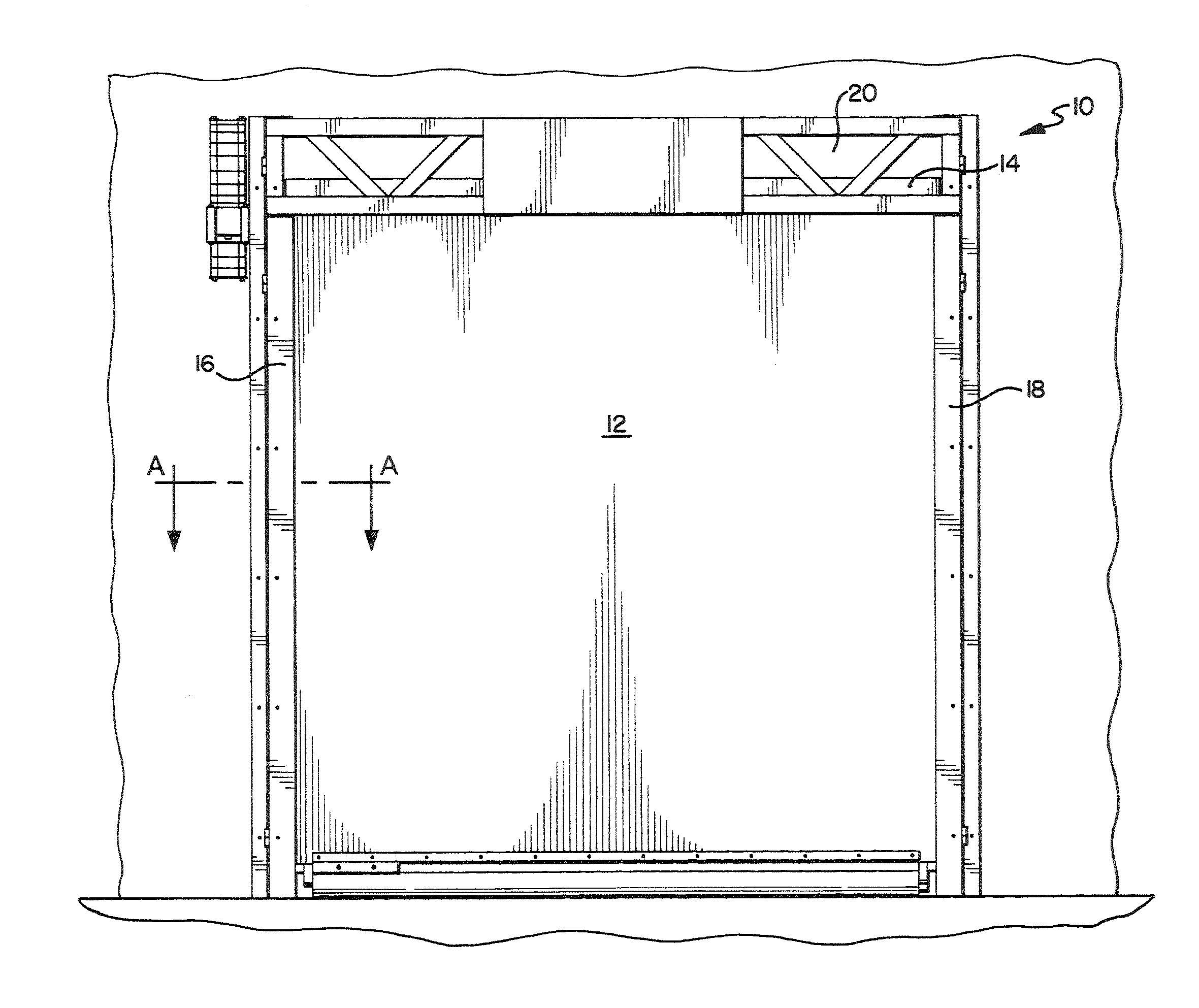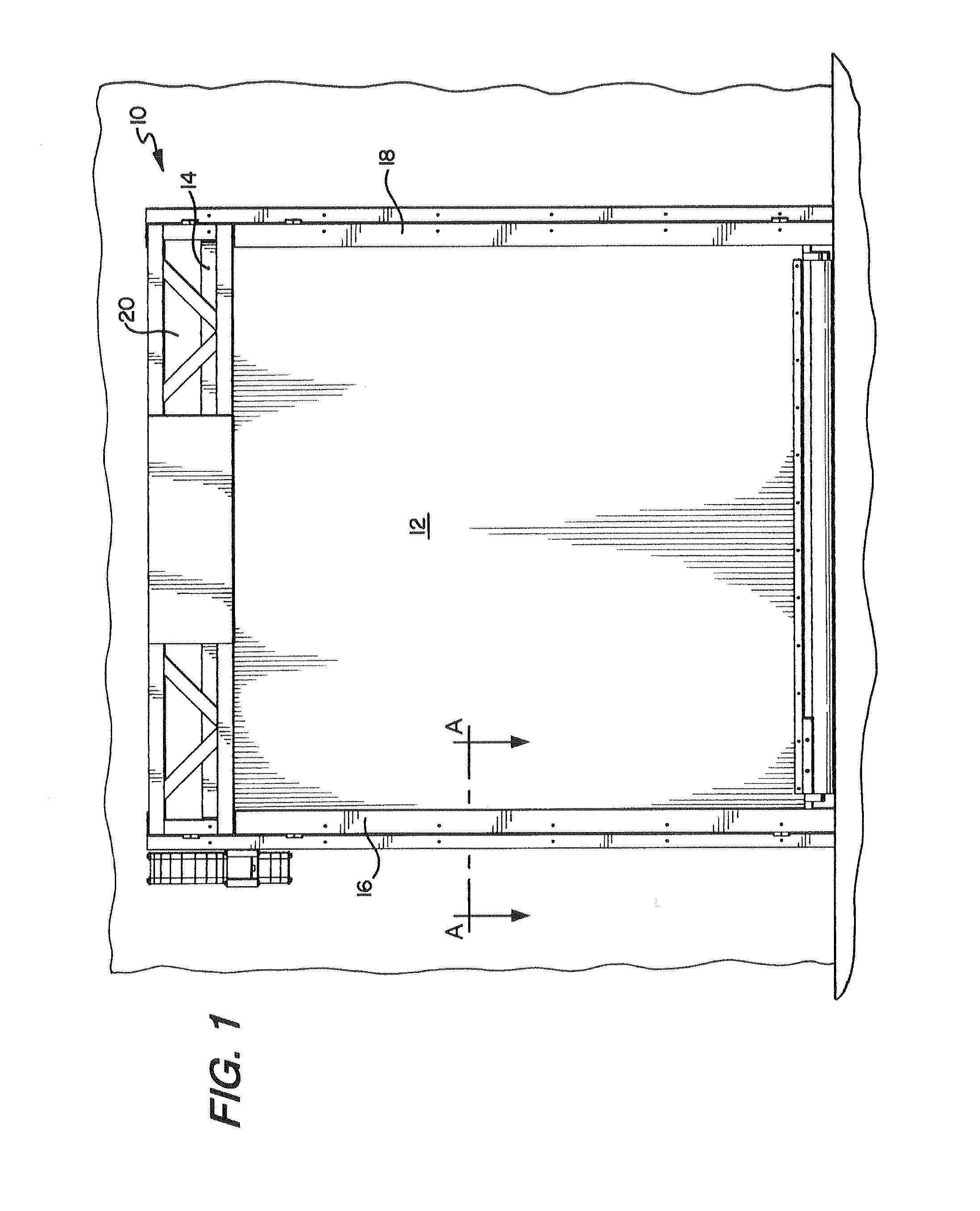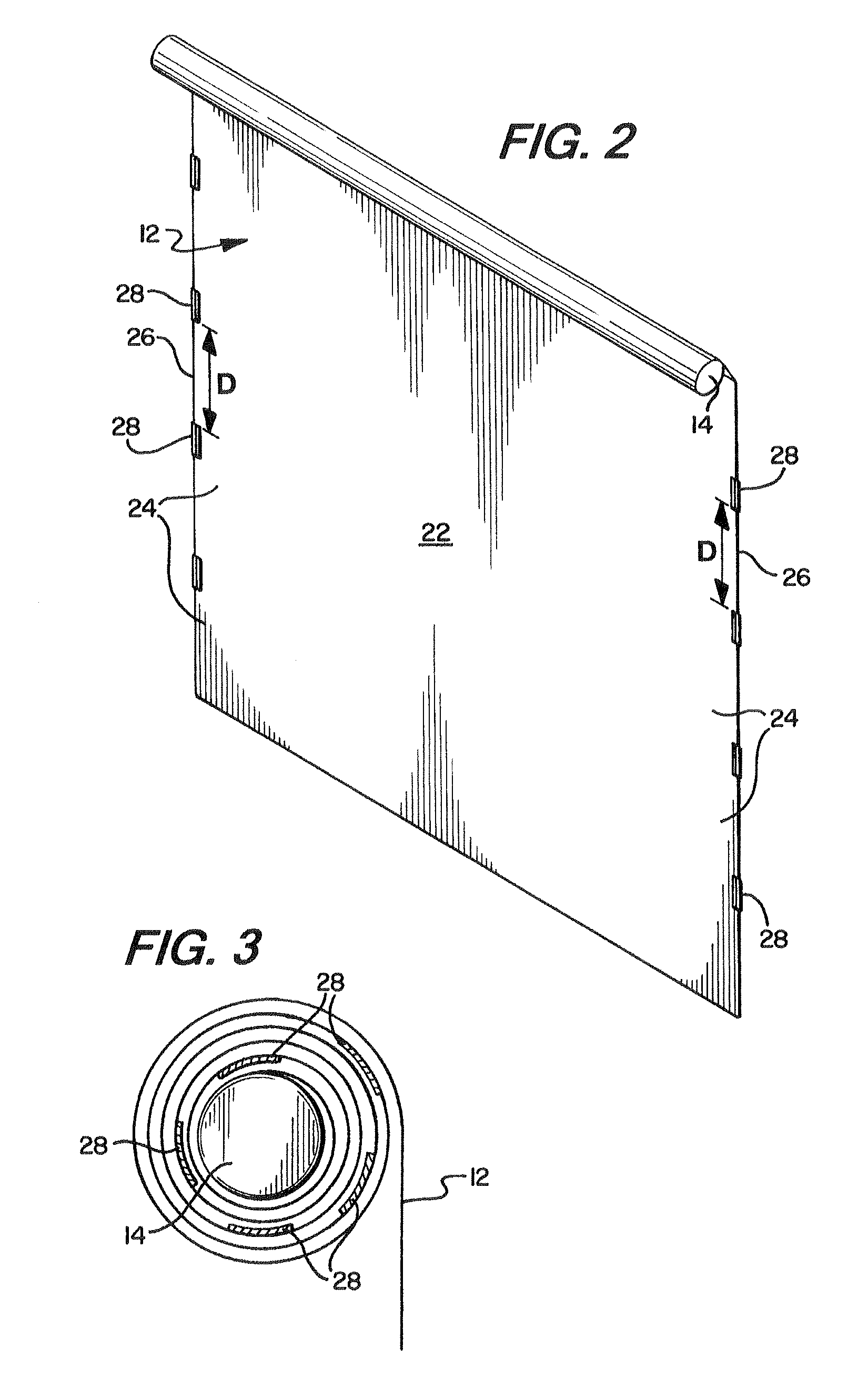Segmented wind lock configuration for overhead roll-up doors and method of constructing the same
a wind lock and configuration technology, applied in the direction of door/window protective devices, curtain suspension devices, shutters/movable grilles, etc., can solve the problems of increasing the resistance of the side column, the side edge may become stuck or jammed, and the side edge may be known to be thickened continuously, so as to reduce friction and maintain the disengageability. , the effect of reducing the resistan
- Summary
- Abstract
- Description
- Claims
- Application Information
AI Technical Summary
Benefits of technology
Problems solved by technology
Method used
Image
Examples
Embodiment Construction
[0031]While the present invention is susceptible of embodiment in many different forms, there is shown in the drawings and will herein be described in detail, preferred embodiments of the invention with the understanding that the present disclosure is to be considered as an exemplification of the principles of the invention and is not intended to limit the broad aspect of the invention to the embodiments illustrated.
[0032]FIG. 1 shows a door assembly 10 having door panel 12, drum 14 for winding and unwinding door panel 12 to permit and prohibit access to an opening, side columns 16, 18 which engage a marginal edge of door panel 12 (and which further guide door panel 12 between the open and closed position) and header 20 for housing drum 14 and any unrolled portion of door panel 12.
[0033]FIG. 2 shows an isolated view of door panel 12 and drum 14 as contemplated by an embodiment of the invention. As seen in FIG. 2, door panel 12 includes a first face 22, opposing marginal edges 24 and...
PUM
| Property | Measurement | Unit |
|---|---|---|
| height | aaaaa | aaaaa |
| thickness | aaaaa | aaaaa |
| speed | aaaaa | aaaaa |
Abstract
Description
Claims
Application Information
 Login to View More
Login to View More - R&D
- Intellectual Property
- Life Sciences
- Materials
- Tech Scout
- Unparalleled Data Quality
- Higher Quality Content
- 60% Fewer Hallucinations
Browse by: Latest US Patents, China's latest patents, Technical Efficacy Thesaurus, Application Domain, Technology Topic, Popular Technical Reports.
© 2025 PatSnap. All rights reserved.Legal|Privacy policy|Modern Slavery Act Transparency Statement|Sitemap|About US| Contact US: help@patsnap.com



